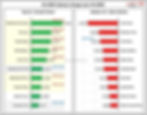Indian Mass-market Passenger Vehicle Industry Analysis - H1 2025
- Team Autopunditz
- Jul 10
- 3 min read
Highlights
2025 registered the highest-ever half-yearly wholesale of 21,89,733 vehicles, but the growth rate dropped to 1.3%
4,02,761 vehicle sales make January 2025 the best sales month in history
Maruti Wagon R became the best-selling car in the first half of 2025
Mahindra became the second-largest carmaker in H1-2025
All manufacturers offered discounts to prop up sales in 2025
Strong demand for SUV and crossover body-style products is the major growth driver in 2025
Renault announced its plans to acquire Nissan’s 51% stake in the Indian manufacturing plant (RNAIPL)
Indian mass market passenger vehicle industry


The Indian passenger vehicle industry posted the highest ever wholesale of 21,89,733 cars (dispatch from brands to their dealers) in H12025; however, the growth rate has drastically dropped to 1.3%.

India's GDP growth rate slowed down to 5.4% in Q3 2024 (CY), well before global trade tensions emerged, and the downward trend has also started reflecting in passenger car demand. Despite the slowdown in retail demand, several brands maintained high wholesale volume through early 2025, resulting in inventory build-up for several products across retail channels in India. In June, dispatches were reduced to correct some of the accumulated inventory.
Decoding the growth path

To better understand the growth trend, we at Auto Punditz compiled the Indian passenger vehicle CAGR (Compound Annual Growth Rate) series, using 2005 as a common base year. Growth in 2025 was lower compared to 2023 and 2024, which is not a positive sign from a long-term perspective, especially as India’s GDP growth rate has slowed down. The government has introduced both fiscal (personal income tax slab changes) and monetary measures (a 1% RBI rate cut) to revive economic growth.
Brand Growth

Here on, we will peel different layers to understand the deeper ramifications of the growth slowdown on industry players. The impact of the slowdown can be clearly seen on brands that do not have anything new to offer or have a product portfolio with a weak value proposition.
Mahindra, Toyota, Kia, Skoda, and MG have launched all-new products in 2024 and 2025; as a result, they have posted positive sales growth, resulting in higher market share compared to 2024.
Mahindra outpaced the industry growth rate with significant volume and market share growth due to an ICE and EV product onslaught and secured the #2 position in H1 2025. Toyota’s growth was entirely driven by the addition of new cross-badged products from Maruti’s portfolio.
Maruti, Hyundai, and Tata witnessed steep volume drops and higher discounts across their product ranges. Honda, Renault, Nissan, Citroën, and Jeep have suffered massive de-growth in 2025.
Products Driving Industry Growth

2025 growth was driven by products that are either entirely new or underwent a facelift in 2024. The top 10 growth driver list is constituted by products with SUV or crossover body styling.
Products that dragged down growth in 2024 were composed of models where either a facelift is due or the value proposition is not in line with current market expectations. A steep fall in Punch EV sales, along with the impending facelift for the ICE version, resulted in a massive drop in volume and rank for the Tata Punch.
2025 : Impact on body style

Despite a slowdown in the overall growth rate, the SUV and crossover segment posted healthy volume and market share growth, as brands focused heavily on this body style to address changing consumer preferences in India. Hatchbacks suffered a significant decline in 2025, with their market share dropping to a mere 24%. The decline in sedan sales was arrested by the new generation of the Maruti Dzire and Honda Amaze, both launched in 2024 in the sub-4m sedan segment.
2025 Way Forward
The future growth path for 2025 will now depend on GDP growth revival on the back of fiscal and monetary measures, and evolving consumer sentiments, especially during the festive season. Brands must be cautious with their pricing strategy, discounting tactics, and dealer stock levels to ensure the sustainability of the overall business ecosystem.
